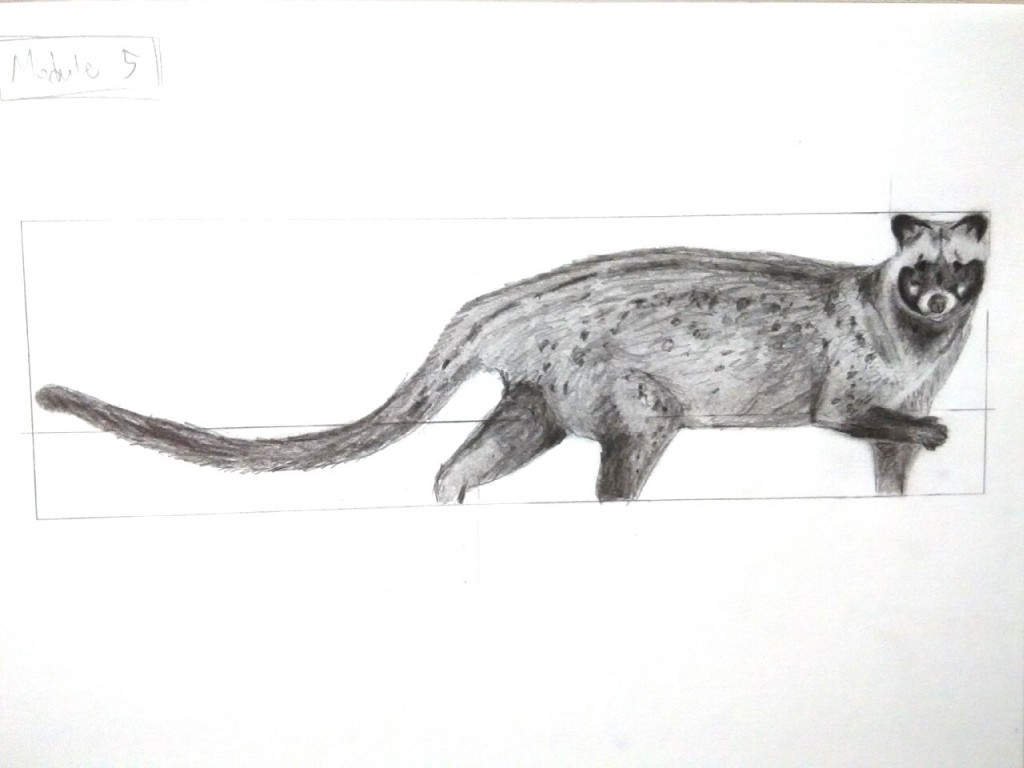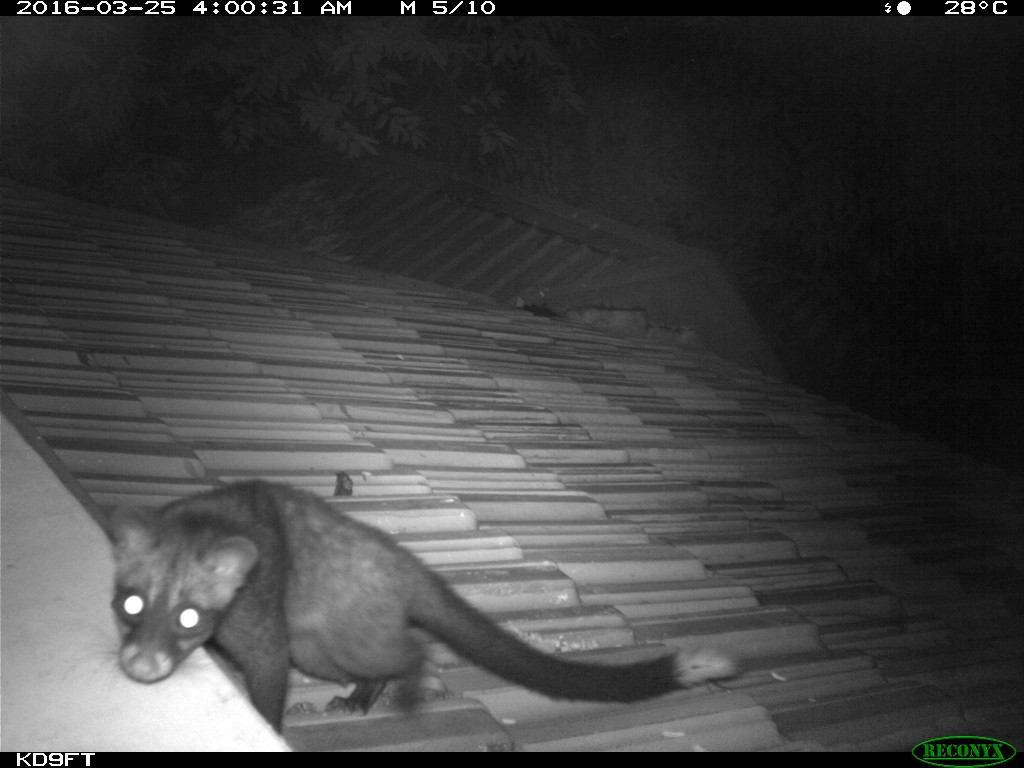It is hard to get civets in photographs, let alone in artwork. In the last month of 2016, we received two lovely common palm civet artwork submissions.
The first is from Henrietta Woo. She chose to take up the challenge of drawing Mr Kinky Tail for one of her drawing classes. Some of you might be familiar with Mr Kinky Tail. He/she is an urban civet that was sighted in Opera Estate, Singapore. Nonetheless, Mr Kinky Tail will always remain as a very special civet.

Henrietta’s artwork of Mr Kinky Tail. Thanks for keeping the memory of Mr Kinky Tail alive, Henrietta!
The second is of a common palm civet on a figging tree. This watercolour painting was done by Mireille Murphy. This was inspired by civet sightings on Frasers’ Hill. The drawing truly reflects a common palm civet’s frugivorous habits. Civets can occasionally be found in figging trees and sometimes, if you are in luck, you might even find more than one individual. Did you notice another unusual characteristic about this civet? Instead of the usual black tail, there are some individuals which have a white or off white-tipped tail. Such unique characteristics are useful in allowing researchers to identify specific individuals in an area.
Civet sightings are hard to come by, so if you do have the fortune of urban civets visiting your house or have seen civets in your neighbourhood, please do share with us your sightings here. As 2016 comes to an end, we carry on with the hope that more people here in Singapore and in the rest of Southeast Asia will come to have a better understanding and appreciation of our native urban carnivoran, the common palm civet. And hopefully these efforts will translate into positive actions for civets, such as reducing the exploitation of wild civets for farmed kopi luwak trade or promoting co-existence between civets and humans in urban landscapes.



